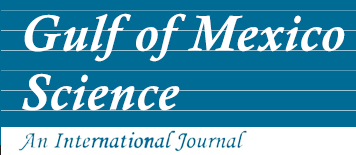Alternate Title
A Numerical Model Calculation of the Flow in DeSoto Canyon in Response to Northerly Wind Bursts in Winter
Abstract
The continental shelf currents observed at the head of DeSoto Canyon offshore of Pensacola, FL, during Nov, 1997-Feb. 1998, are studied with the aid of a Bryan-Cox model of the entire Gulf of Mexico. The basic model circulation with no winds features a Loop Current and a weak flow in DeSoto Canyon. In contrast, the model response to northerly wind bursts produces strong canyon currents. Wind-driven southward currents on the West Florida Shelf (WFS) appear to pull a strong flow around DeSoto Canyon, giving rise to a strong up-canyon flow on the west flank The wind-enhanced flow in DeSoto Canyon is reproduced with a model run that incorporates wind stresses derived from the NCEP-NCAR reanalysis winds for March 1997-April 1998. The model flow for the winter period (Nov. 1997-Feb. 1998) is compared with observed currents at three canyon-head locations in 100 m of water available from a Science Applications International Corporation mooring experiment. Model and observed velocities in the general around-canyon direction track each other reasonably well, with peaks synchronized roughly with but lagging slightly northerly wind bursts. The lag time appears consistent with the generation at Key West of first-mode continental shelf waves responsible for wind-driven alongshore currents on the WFS. Pressure gradient slightly in excess of that necessary for a geostrophic balance with the (eastward) alongshore flow appears to generate onshore flows, giving rise to midshelf upwelling after northerly wind bursts.
Recommended Citation
Hsueh, Y. and Y. Golubev.
2002.
A Numerical Model Calculation of the Flow in DeSoto Canyon in Response to Northerly Wind Bursts in Winter.
Gulf of Mexico Science
20
(1).
Retrieved from https://aquila.usm.edu/goms/vol20/iss1/5

